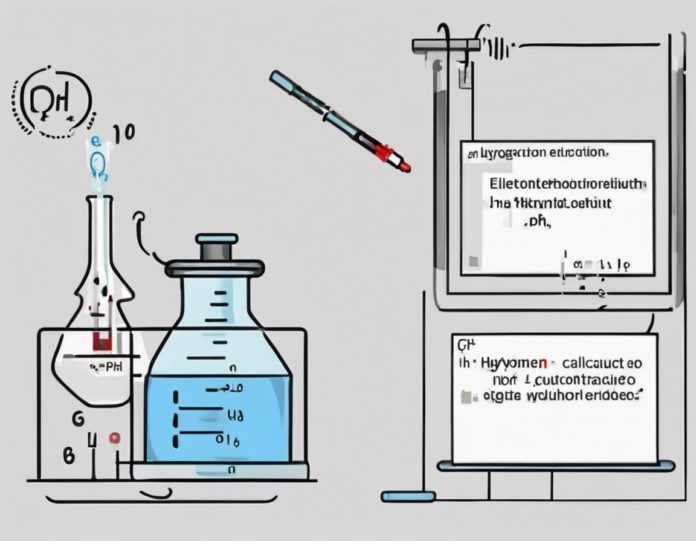Introduction
In the field of chemistry, the concept of pH plays a crucial role in understanding the acidity or alkalinity of a solution. The pH scale ranges from 0 to 14, with 7 being considered neutral, values below 7 indicating acidity, and values above 7 signaling alkalinity. One of the key tools used to measure and determine pH levels is the Potential of Hydrogen (pH) electrode. This electrode is widely employed in laboratories and industrial settings for its accuracy and reliability in pH measurements. In this comprehensive guide, we will delve into the specifics of the pH electrode, its working principles, and how it is used to determine the pH 10 potential of hydrogen electrode.
Understanding the Potential of Hydrogen (pH) Electrode
The Potential of Hydrogen (pH) electrode is a specialized sensor that measures the hydrogen ion activity in a solution. The electrode consists of a glass tube with a thin bulb at its tip, which is sensitive to changes in hydrogen ion concentration. Within the electrode, there are two electrodes: a glass electrode and a reference electrode (calomel or silver chloride). The glass electrode contains a solution of known pH, which establishes a baseline for comparison, while the reference electrode provides a stable potential against which the pH can be measured.
Working Principles of the pH Electrode
When the pH electrode is immersed in a solution, a potential difference is generated between the glass electrode and the reference electrode. This potential difference is directly related to the concentration of hydrogen ions in the solution. The pH electrode converts this potential difference into a pH value, which is displayed on a meter connected to the electrode. The meter typically provides a digital readout of the pH value, making it easy for users to obtain accurate pH measurements.
Calibration of pH Electrode
To ensure the accuracy of pH measurements, it is essential to calibrate the pH electrode regularly. Calibration involves immersing the electrode in buffer solutions of known pH values (usually pH 4, 7, and 10) and adjusting the meter readings accordingly. This process allows the electrode to account for any deviations or drift in its readings over time, ensuring that accurate pH measurements are obtained.
Determining pH 10 Potential of Hydrogen Electrode
When determining the pH 10 potential of a hydrogen electrode, the electrode is immersed in a buffer solution with a pH value of 10. The electrode generates a potential difference between the glass electrode and the reference electrode, which is then translated into a pH value of 10 on the meter. This measurement indicates that the solution is alkaline, with a high concentration of hydroxide ions and low concentration of hydrogen ions.
Applications of pH Electrode in Various Industries
The pH electrode is utilized across various industries for a wide range of applications, including:
-
Water Treatment: pH electrodes are used to monitor and control the pH levels of water in treatment plants, ensuring that the water is safe for consumption and meets regulatory standards.
-
Food and Beverage Industry: pH electrodes play a crucial role in the production of food and beverages, where precise pH control is essential for maintaining product quality and safety.
-
Biotechnology and Pharmaceutical: pH electrodes are used in biotechnological and pharmaceutical processes to monitor pH levels during fermentation, cell culture, and drug manufacturing.
-
Environmental Monitoring: pH electrodes are employed in environmental monitoring to assess the acidity or alkalinity of soil, water bodies, and air, providing valuable insights into ecosystem health.
Tips for Maintaining pH Electrode
To prolong the lifespan and ensure the accuracy of pH measurements, it is important to follow these maintenance tips:
- Regular Calibration: Calibrate the pH electrode frequently using standard buffer solutions to maintain accuracy.
- Proper Storage: Store the pH electrode in a proper storage solution when not in use to prevent drying out and damage.
- Cleaning: Clean the electrode with a gentle cleaning solution to remove any residues that may affect accuracy.
- Handling: Handle the electrode with care to prevent damage to the sensitive glass bulb.
- Replacement: Replace the electrode if it shows signs of wear or damage to avoid inaccurate readings.
Frequently Asked Questions (FAQs)
- How often should I calibrate my pH electrode?
-
It is recommended to calibrate the pH electrode before each use or at least once a day for frequent use to ensure accurate measurements.
-
Can I use distilled water to rinse the pH electrode?
-
Yes, rinsing the pH electrode with distilled water is recommended to avoid contamination from tap water or other sources.
-
What is the shelf life of a pH electrode?
-
The shelf life of a pH electrode varies depending on its usage and maintenance but typically ranges from 1 to 3 years.
-
Can a pH electrode be repaired if damaged?
-
In most cases, pH electrodes cannot be repaired once damaged and should be replaced to maintain accuracy in measurements.
-
Why is it important to store the pH electrode in a storage solution?
- Storing the pH electrode in a proper storage solution helps keep the glass bulb hydrated and maintains its sensitivity for accurate measurements.
In conclusion, the Potential of Hydrogen (pH) electrode is an indispensable tool for measuring pH levels in various industries and applications. By understanding its working principles, calibration methods, and maintenance tips, users can ensure accurate and reliable pH measurements for their specific needs. Mastering the use of pH electrodes can greatly enhance the quality control processes, research endeavors, and environmental monitoring efforts where pH plays a critical role.

